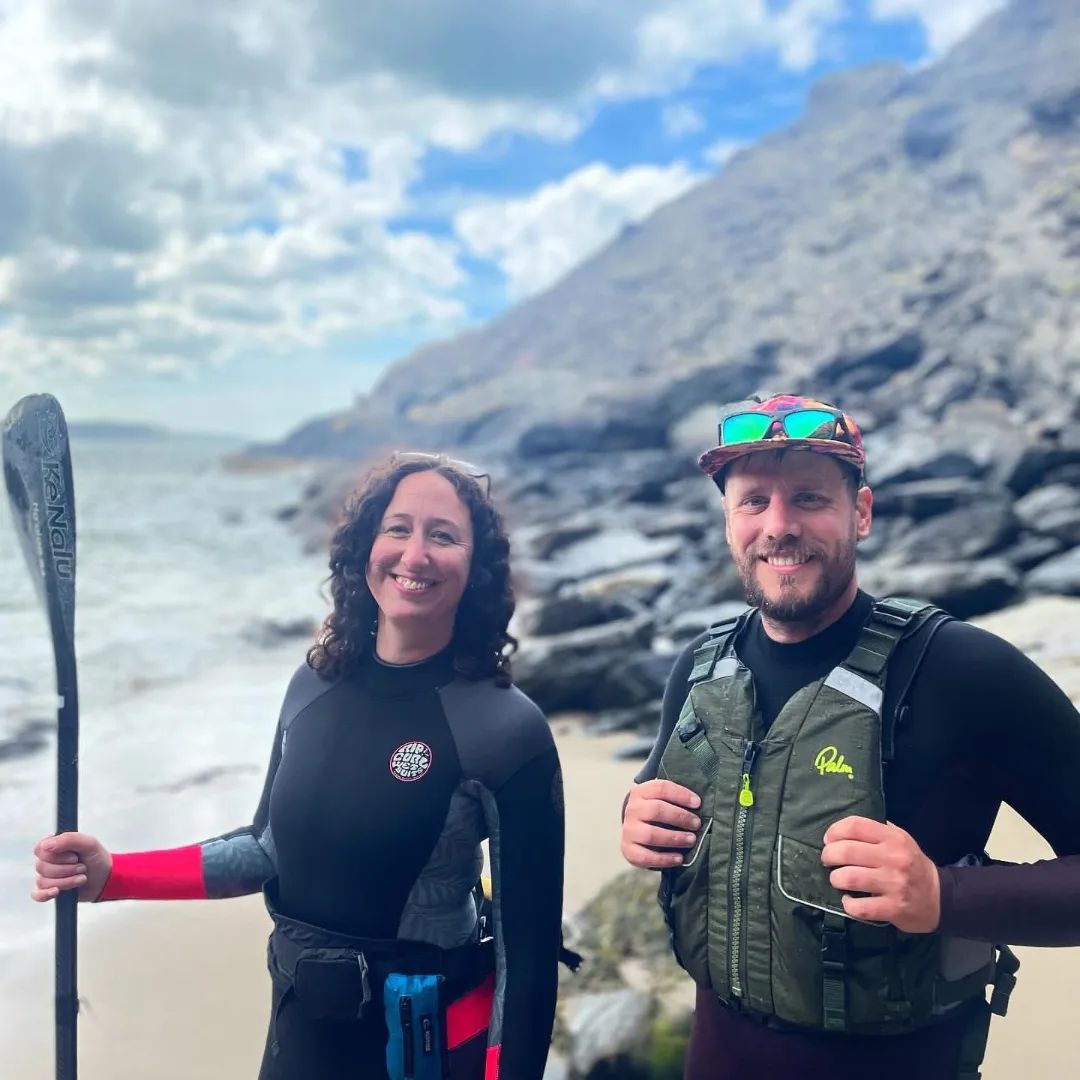Welcome to another blog post about paddleboarding on the River Medway in winter! I know what you're thinking - "not another look what my sponsor gave me blog". But fear not, dear reader, I won't bore you with endless product endorsements. Instead, I'll give you some practical advice on how to survive the potentially treacherous waters of the Medway during the colder months.

First things first, let's talk about what to wear. Dressing for the water temperature, not the air temperature. I mean, who needs to know what the air temperature is anyway? Just dress like you're going to be submerged in ice-cold water for hours on end. That way, you'll be prepared for anything! Just remember to double-check that your chosen outfit is fit for purpose before you hit the water.
Layering up is a good idea but just remember when you are an hour into a paddle and fall in you still have an hour of paddling before your back at your car to warm up! So your layers need to work for the water temperature. I have seen coaches recommend wearing a long john wetsuits with Hoodies over the top which is great for managing your dry body temp but prone to severe flushing and dragging you in when you fall in and thus cold water shock. Every body is different and can have different needs and responses to cold water. Find yours out before you have no choice.
Don’t get me started on the wetsuit versus drysuit argument I’ll save that for a future blog! Whatever you chose to wear consider these things.
1. Water Temperature – can your layers or outfit keep you warm even an hour or two after falling in as you paddle back? Can you take a change of outfit so post plunge you can change? Does your outfit help Cold Water Shock. 2. Wind Chill – is it worth wearing a wind proof top to keep warm when paddling? Be mindful of over heating too. 3. Can You Move – Being warm is one thing but have you tried paddling in a winter wetsuit with layers on top, those guns will be getting a workout before you know it! Adapt your sessions to suit the required change in outfit.
Lastly Does it work? Who knows! That's what testing is for. I mean, it's not like your life is at stake or anything. Just jump into the freezing water and see if your outfit actually keeps you warm. What's the worst that could happen? Hypothermia? Pshh, that's just a minor inconvenience. Test it out and not on a nice day! Check it in the conditions you will be paddling in. Go to a local lake such as Leybourne lakes and test out your winter paddling outfit for real!

Oh, and don't forget to check the forecast. Not just the weather, mind you, but also the river flows. The River Medway flows at an average of 11m3/s, but in flood, it can be over 120m3/s! That's ten times faster than usual, so make sure you have a solid plan in place before you hit the water including the right safety equipment. And by "solid plan", I mean "have an exit plan". Just in case you get swept away by the raging river, you know? Do you know where you can safely exit the River on your route? What might have been viable on slower flows may not be an option now, can you manage them in stronger flows and higher water?
But wait, there's more! Did you know that the River Medway is home to many weirs and locks? No? Well, now you do. So, make sure you avoid them especially at faster flows. Or, if you're feeling particularly adventurous, why not try paddleboarding over one? You know what they say, nothing ventured, nothing gained. (Don’t do this! Most deaths in paddleboarding were caused by entanglement in strong flows) A weir can have very large tow backs. What’s a tow back check out this video from Caversham Fire Service. Tow backs can span several meters down stream from a weir or lock etc.
In all seriousness, paddleboarding on the River Medway in winter can be a thrilling and rewarding experience. But it's important to take the necessary precautions and be prepared for anything. So, dress appropriately, test your gear, check the forecast, and have a solid exit plan. One of the biggest risks of paddleboarding in winter is cold water shock. This can occur when your body is suddenly exposed to cold water below 15 degrees Celsius, causing an involuntary gasp reflex and a sudden increase in heart rate and blood pressure. In winter, the River Medway can be as low as 5 degrees Celsius, which means that the risk of cold water shock is very real. If you do fall into the cold water, try to stay calm and control your breathing until the initial shock subsides. Remember, it's always better to be safe than sorry, so take the necessary precautions to protect yourself from the risks of cold water shock.
And if all else fails, just remember to blame it on that influencer telling you to wear this for winter paddling because my sponsor gave it to me for free!
